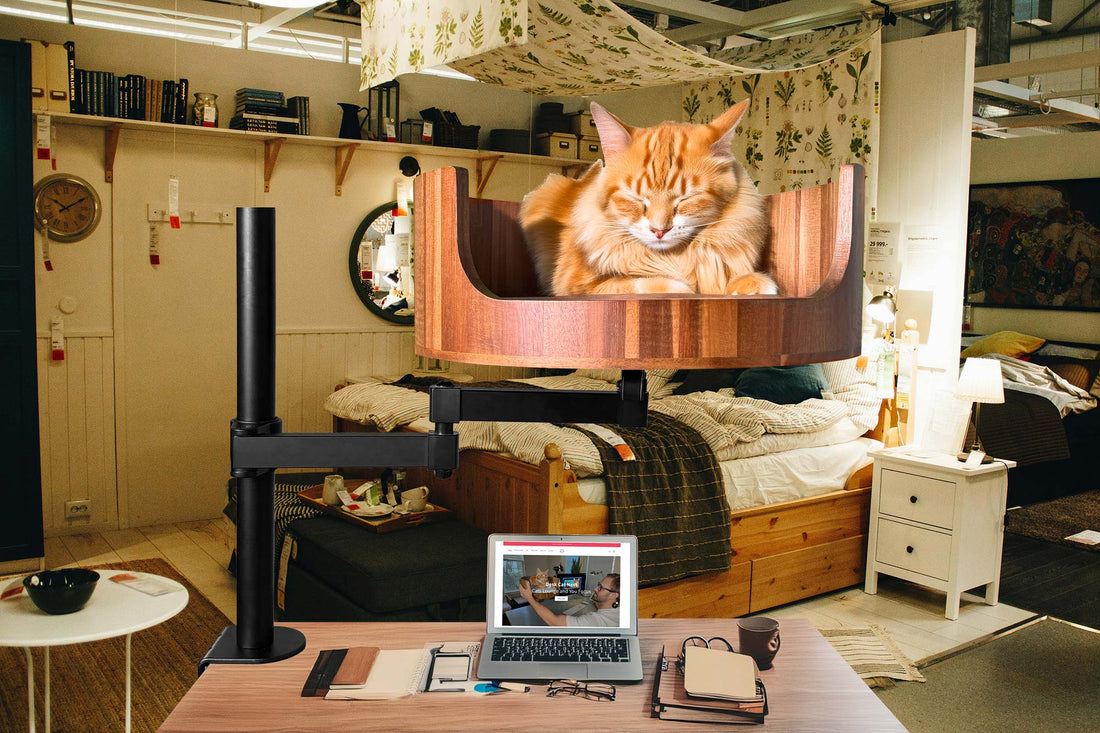
Why Does My Cat Wag Her Tail? Understanding Feline Behavior
Share
Cat owners often find themselves puzzled by the various behaviors exhibited by their feline friends. One particular behavior that can be both confusing and intriguing is when a cat wags her tail. While dogs are commonly associated with tail wagging as a sign of happiness or excitement, the same gesture in cats can convey a completely different message. Understanding why cats wag their tails can provide valuable insight into their emotions and intentions.
In this article, we will delve into the world of feline behavior to uncover the reasons behind why cats wag their tails. From decoding the different types of tail movements to exploring the various emotions that may trigger this behavior, we will provide a comprehensive guide for cat owners looking to better understand their pets. By gaining a deeper knowledge of why cats wag their tails, you will be better equipped to interpret your cat's feelings and strengthen the bond between you and your furry companion.
1. Tail wagging in cats can communicate a variety of emotions, not just anger or irritation.
2. Understanding your cat's body language is crucial for deciphering their feelings and needs.
3. Tail flicking or twitching can indicate excitement, fear, or even pain in cats.
4. Pay attention to accompanying body language and context to fully interpret your cat's tail movements.
5. By observing and responding to your cat's tail language, you can strengthen your bond and improve communication with your feline companion.
1. The Purpose of Tail Wagging in Cats
Cats wag their tails as a form of communication, expressing their emotions and mood. While dogs typically wag their tails to show excitement or happiness, cats have a range of tail movements with different meanings. A slow, gentle wag may indicate contentment, while a rapid, aggressive wag could signal agitation or aggression. Understanding these subtle cues can help you better interpret your cat's feelings and respond appropriately.
2. Tail Wagging in Different Situations
Tail wagging can vary depending on the context in which it occurs. For example, a cat may wag her tail excitedly when playing, hunting, or anticipating a meal. On the other hand, a cat may wag her tail aggressively when feeling threatened or cornered by another animal or person. Observing your cat's body language and the overall situation can help you determine the reason behind her tail wagging behavior.
3. Health Issues and Tail Wagging
In some cases, excessive or abnormal tail wagging in cats could be a sign of an underlying health issue. Pain, discomfort, or neurological problems can cause a cat to exhibit unusual tail movements. If you notice a sudden change in your cat's tail wagging behavior, it is important to consult a veterinarian to rule out any potential medical issues and provide appropriate treatment.
4. Tips for Understanding and Responding to Tail Wagging Behavior
To better understand your cat's tail wagging behavior, it is essential to pay attention to her body language, vocalizations, and overall demeanor. By observing these cues, you can decipher what your cat is trying to communicate and adjust your interactions accordingly. For example, if your cat is playfully wagging her tail, engaging her in interactive play or providing enrichment activities can help release her pent-up energy and prevent potential behavioral problems.
Frequently Asked Questions
Why does my cat wag her tail?
There are a few reasons why your cat may be wagging her tail. It could be a sign of excitement, or it could indicate that she is feeling threatened or agitated. Observing your cat's body language and the context in which she is wagging her tail can help you determine the reason behind this behavior.
Should I be worried if my cat wags her tail?
It's important to pay attention to your cat's body language when she wags her tail. If she seems relaxed and content, there is likely no cause for concern. However, if she appears tense or displays other signs of distress, it may be a good idea to consult with a veterinarian to rule out any underlying health issues.
Can the Desk Cat Nest help with my cat's tail wagging?
The Desk Cat Nest provides a comfortable and cozy space for your cat to relax and unwind. While it may not directly address the issue of tail wagging, providing your cat with a safe and comforting environment can help reduce stress and anxiety, which may in turn decrease the frequency of tail wagging behavior.
How can I encourage my cat to use the Desk Cat Nest?
Introducing your cat to the Desk Cat Nest gradually and making it a positive and inviting space can help encourage her to use it. Placing familiar toys or bedding inside, and offering treats or praise when she spends time in the nest, can help create a positive association with the space.
In conclusion, Desk Cat Bed is a valuable choice for cat owners wondering why their feline companions wag their tails. By providing a comfortable and private space for your cat to relax and feel safe, this innovative product can help reduce stress and anxiety, leading to a decrease in tail wagging behavior. With its soft cushioning and elevated design, Desk Cat Bed offers numerous benefits for both you and your beloved pet. Invest in Desk Cat Bed today and provide your cat with the cozy and secure environment they need to thrive.



















































